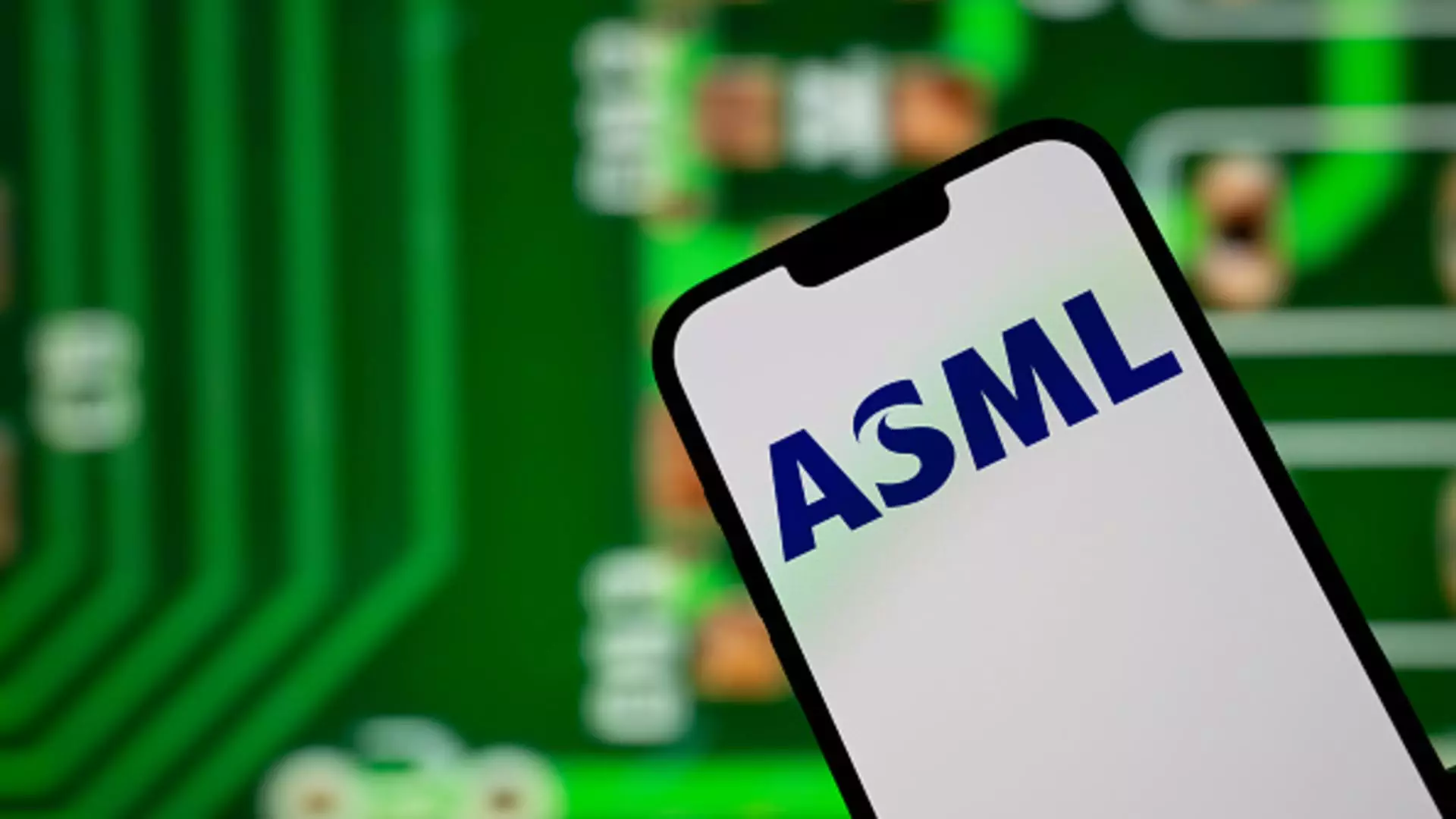In a pivotal moment for the semiconductor industry, Dutch equipment manufacturer ASML recently reported disappointing quarterly results that have sent ripples across financial markets. Posting net sales of €7.74 billion for the first quarter of 2023, ASML missed analyst expectations of €7.8 billion. This shortfall doesn’t merely represent a single misstep in a quarterly report; it reflects deeper concerns regarding the overall health of the semiconductor landscape. Moreover, the company’s net profit of €2.36 billion, exceeding forecasts of €2.3 billion, was overshadowed by the underwhelming order intake of €3.94 billion, far below the anticipated €4.89 billion. Such discrepancies signal troubling times ahead for a sector already grappling with uncertainties.
Trade Restrictions Looming Large
The most disconcerting aspect of ASML’s report is the uncertainty stemming from recent U.S. trade restrictions, which have cast a shadow over expected demand for critical chipmaking machines. CEO Christophe Fouquet asserted that while the demand outlook appears robust—largely driven by rapidly advancing AI technologies—the treacherous waters of geopolitical strife and tariffs continue to introduce significant risk. Experts warn that as the U.S. grapples with its chip supply chain and security investigations, manufacturers like ASML may find themselves caught in a protracted struggle between strategic alignment and market realities.
Fouquet voiced concerns regarding tariffs, describing them as a new uncertainty that could stagnate market demand. The implications extend beyond ASML; they are indicative of broader ramifications that could reverberate throughout the global semiconductor supply chain. In a time when technological innovation remains a primary driver of growth, stagnation—fueled by bureaucratic trade limitations—threatens to stall progress and hinder potential advancements in fields such as artificial intelligence and machine learning.
The Fragility of Global Chip Markets
The fragile state of the semiconductor market, reflected in ASML’s results, also echoes a wider trend of vulnerability among global chip stocks. Investors are on edge, primarily due to conflicting statements from U.S. officials regarding tariffs. Just last week, the U.S. administration indicated that electronic components would be temporarily exempt from reciprocal tariffs, only for confusion to arise again regarding the status of these exemptions. This unpredictable climate places manufacturers, including ASML and their customers, among them TSMC, in a precarious position, having to navigate a maze of contradictory policy statements.
As these uncertainties unfold, industry analysts express cautious optimism. Ben Barringer from Quilter Cheviot noted that the potential impacts of tariffs on ASML could be wide-reaching, yet he refrained from predicting any definitive outcomes. The crux of the matter is that ASML’s global strategy has traditionally aimed at supporting a diverse customer base, irrespective of regional complexities. However, if restrictions tighten further, it begs the question: how long can ASML sustain its commitment to being the world’s production equipment provider?
Nvidia’s Struggles Highlight Urgent Disruptions
Adding to the anxiety enveloping the semiconductor sector is Nvidia’s alarming decision to report a substantial $5.5 billion charge due to U.S. restrictions on H20 graphics processing unit exports to China and other countries. This revelation amplifies the concerns that ASML’s leadership has expressed. If larger tech firms such as Nvidia are facing restrictions and financial repercussions, it raises red flags about the semiconductor supply chain’s resilience. The potential long-term implications of such disruptions may result in slower innovation across the board, a reality detrimental to both producers and consumers.
The Path Forward: A Delicate Balance
As ASML sets its revenue guidance for the remainder of 2023 between €30 billion and €35 billion, it stands at a crossroads. The company must carefully navigate the choppy waters of trade tensions and competitive pressures while keeping sight of the untapped potential in emerging technologies. Still, even within this uncertainty, the company exhibits confidence in the ongoing relevance of artificial intelligence as a growth driver. It is a matter of how effectively it can weather external pressures while aligning its strategies with customer needs in a rapidly changing landscape.
The stakes have never been higher, and as organizations like ASML face these challenges, the consequences could shape the semiconductor market for years to come. On one hand, the promise of artificial intelligence as a forward-looking innovation trend remains bright, but on the other, the looming specter of regulatory entanglements demands immediate attention. The future may be promising, but navigating the present uncertainties will require astute decision-making and adaptive resilience.

